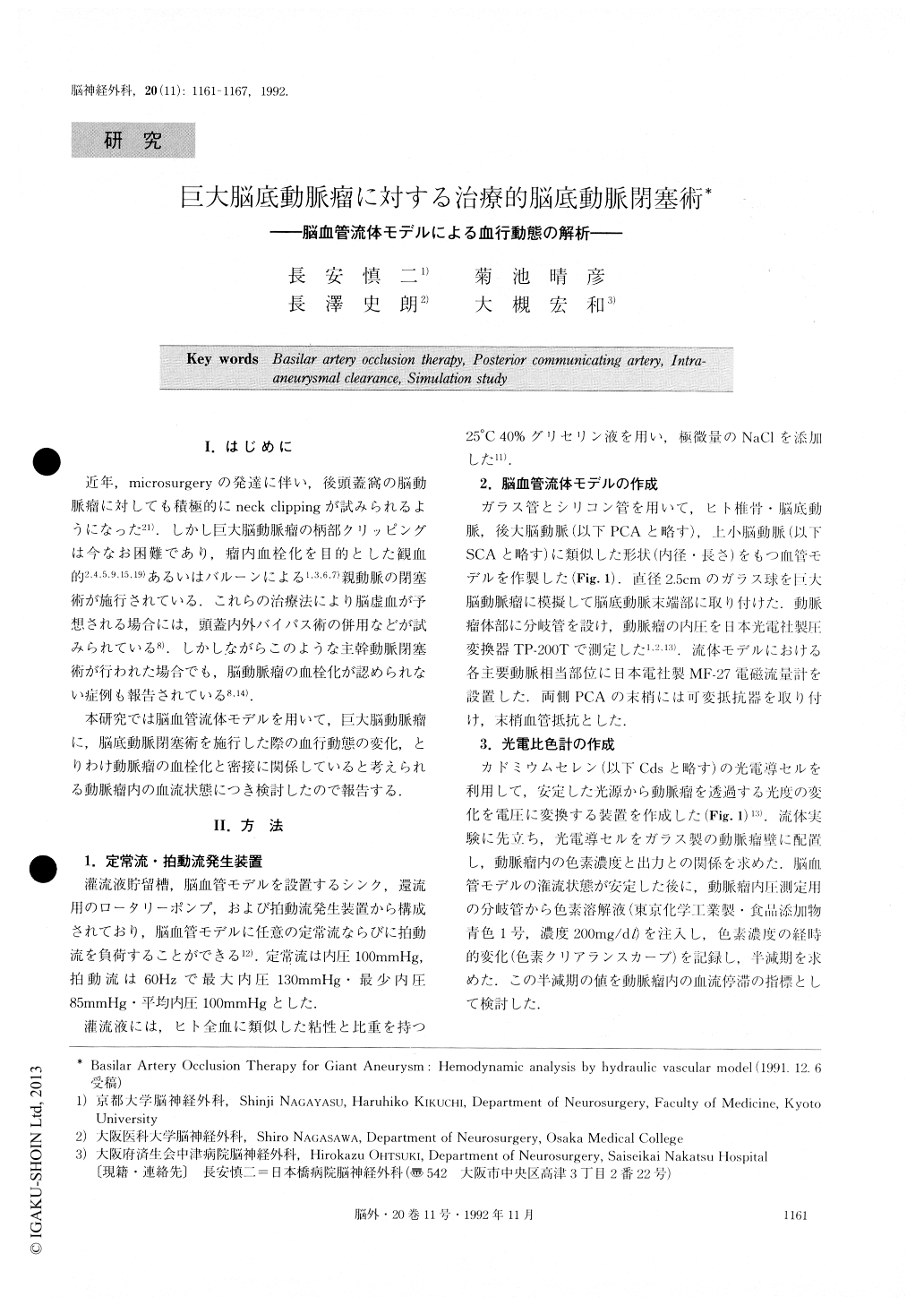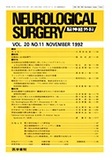Japanese
English
- 有料閲覧
- Abstract 文献概要
- 1ページ目 Look Inside
I.はじめに
近年,microsurgeryの発達に伴い,後頭蓋窩の脳動脈瘤に対しても積極的にneck clippingが試みられるようになった21).しかし巨大脳動脈瘤の柄部クリッピングは今なお困難であり,瘤内血栓化を目的とした観血的2,4,5,9,15,19)あるいはバルーンによる1,3,6,7)親動脈の閉塞術が施行されている.これらの治療法により脳虚血が予想される場合には,頭蓋内外バイパス術の併用などが試みられている8).しかしながらこのような主幹動脈閉塞術が行われた場合でも,脳動脈瘤の血栓化が認められない症例も報告されている8,14).
本研究では脳血管流体モデルを用いて,巨大脳動脈瘤に,脳底動脈閉塞術を施行した際の血行動態の変化,とりわけ動脈瘤の血栓化と密接に関係していると考えられる動脈瘤内の血流状態につき検討したので報告する.
Therapeutic occlusion of the basilar artery has been one of the alternative treatments for surgically or intra-vascularly inaccessible basilar bifurcation giant aneu-rysms. However, several problems have been reported, such as incomplete thrombosis of the aneurysms, their growth or rupture, and cerebral embolism originating from their cavities. Since hemodynamic changes after occlusion therapy are suspected to be responsible for these phenomena, they were investigated by a hydraulic vascular model.
A hydraulic vascular model of the vertebrobasilar artery was constructed with silicone and glass tubes. A glass-made sphere of 2.5cm in diameter was attached to the model and was regarded as a basilar head aneurysm. A 40% glycerol solution at 25℃ was found to be of simi-lar viscosity and specific gravity to those of human whole blood at 37℃ and was perfused in the model. A device to measure intraaneurysmal clearance was made from a stable luminous source and a Cds photocell. Good cor-relation was found between the output and an in-traaneurysmal dye concentration. The dye was injected into the aneurysm and its half-life was calculated from clearance curves. It was then regarded as an index of stagnation in an aneurysmal cavity. The flow volumes were estimated as: 60ml/min to the territory of oneposterior cerebral artery (PCA) and 80ml/min to the cerebellum and the brain stem. Half-life was recorded in the following conditions: 120ml/min of flow in the basi-lar artery (BA) into bilateral PCAs simulating the condi-tion before BA occlusion, and various flow values (60ml/ min to 10ml/min) of P, segment simulating the condi-tions after BA occlusion distal to the superior cerebellar artery.
The results are as follows:1) BA occlusion made intraaneurysmal dye stagnate and the half-life elongate significantly.2) The time gradually increased as the flow volume through P, segment decreased from 60ml/min to 20ml/ min, below which it increased drastically.3) The P, flow volume of less than 20ml/min corre-sponded to the diameter ratio of two Pcoms larger than 0.71.4) Intraaneurysmal thrombosis would be expected when the diameter ratio of the Pcoms was larger than 0.71 Although rigid application of this result to clinical cases may have some limitations, the simulation study is useful for evaluating the efficacy of therapeutic occlu-sion of the basilar artery.

Copyright © 1992, Igaku-Shoin Ltd. All rights reserved.


